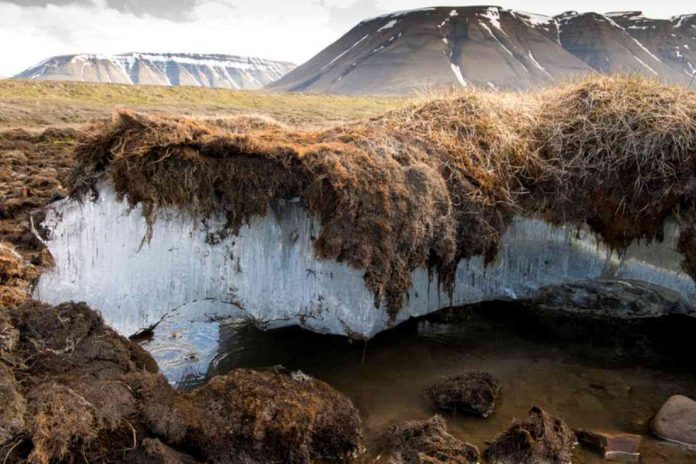Researchers have discovered massive reserves of mercury hidden in permafrost.
Research published in Geophysical Research Letters exposes another worrisome consequence of thawing permafrost—mercury (Hg) contamination. Led by Paul Schuster, a hydrologist at the US Geological Survey in Boulder, Colorado, the study’s authors examined 13 drill cores collected from a variety of Alaskan permafrost sites to create the first estimate of Northern Hemisphere mercury storage of its kind.
Shockingly, Schuster’s team found that “permafrost soils store nearly twice as much Hg as all other soils, the ocean, and the atmosphere combined,” according to the study.
“Before this, the global budgets of mercury just assumed little or no mercury in permafrost but our measurements indicate that’s exactly the opposite,” study co-author Kevin Schaefer, a research scientist at the National Snow & Ice Data Center, told me in a phone call.
“Not only is there mercury, it’s the biggest pool of mercury on the planet,” he said.
About 15 million gallons of mercury, from this initial estimate, is locked away in these Northern permafrost areas (mercury is in Southern hemisphere permafrost regions too, but this study focused on the North). That’s about 10 times the amount of mercury pollution caused by humans over the past 30 years.
If these regions continue to defrost, this toxic element could escape into soil, water, and air. “Mercury gets uptaken by plants either through the roots or the leaves where it becomes incorporated into the organic material by mimicking nutrients like iron or magnesium,” Schaefer explained. As plants die and decay, he said, microorganisms feeding on them release mercury into the air along with nitrogen and other gases.
Mercury poisoning can have far-ranging impacts on ecosystems and human health, especially because it is bioaccumulative, meaning it tends to amass in animals that are higher in the food web, particularly aquatic predators.
Exposure to mercury can be fatal, so the reality that our warming planet might unleash untold amounts of it has serious medical and environmental implications. It would be particularly damaging to people that rely on permafrost ecosystems for their food, and in Alaska, that burden may fall disproportionately on remote subsistence communities, including Indigenous groups.
But before you integrate this frightening new revelation into your Doomsday prep spreadsheet, take some temporary solace in the fact that a lot of research still needs to be done. Over email, Schuster told me that his team is already collecting more cores around the circumpolar belt—including from Russia, Scandinavia, and Canada—to bolster this study, and that data will be integrated into models of permafrost mercury release, based on similar research into the global carbon cycle.
“We’re going to figure out how much permafrost and organic matter is going to thaw out, how much mercury is going to be released, where it’s going to be released, and in what form,” Schaefer said. “Is it going to go out through the atmosphere, or the water system? We’ll answer those kinds of questions.”















